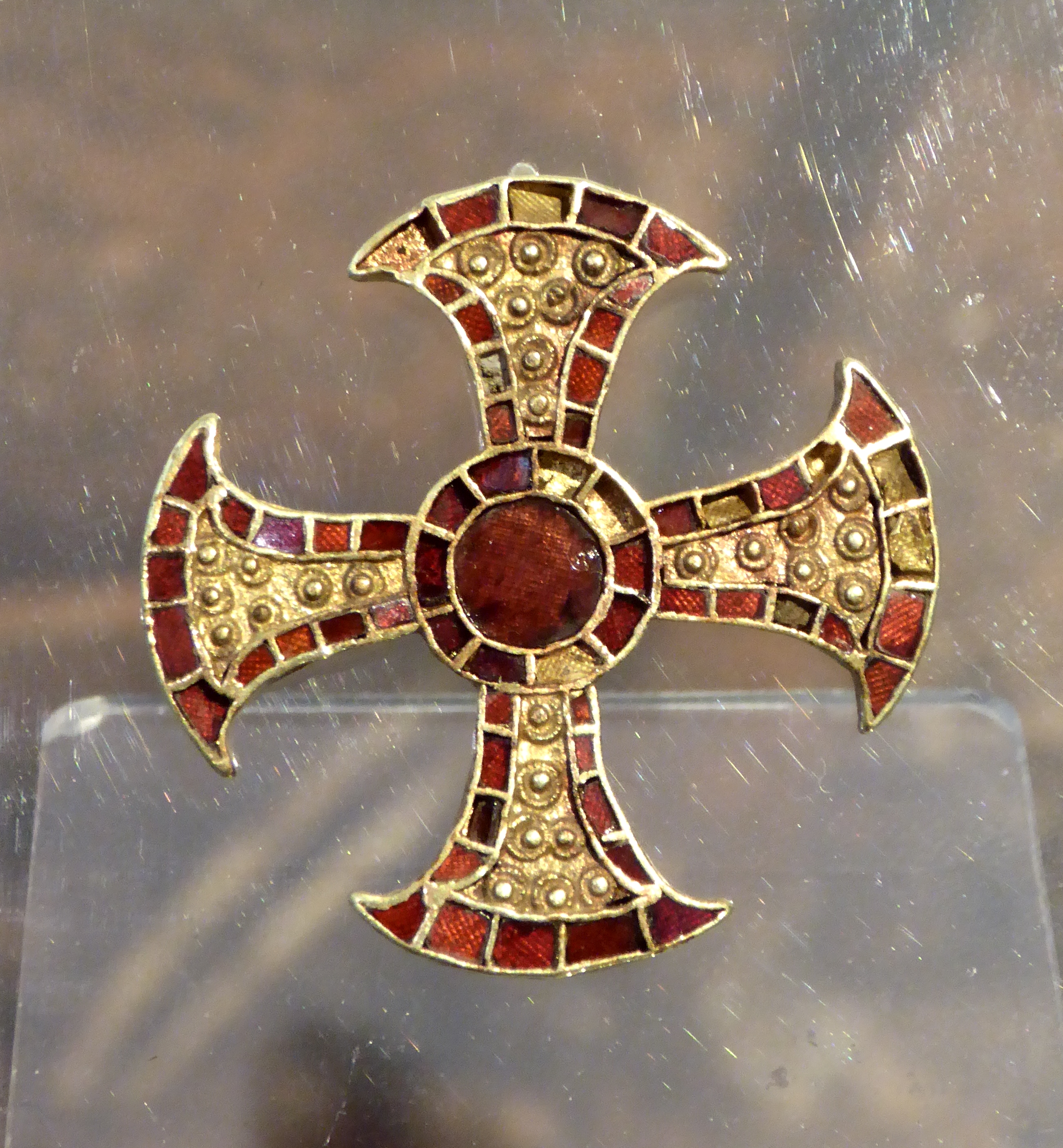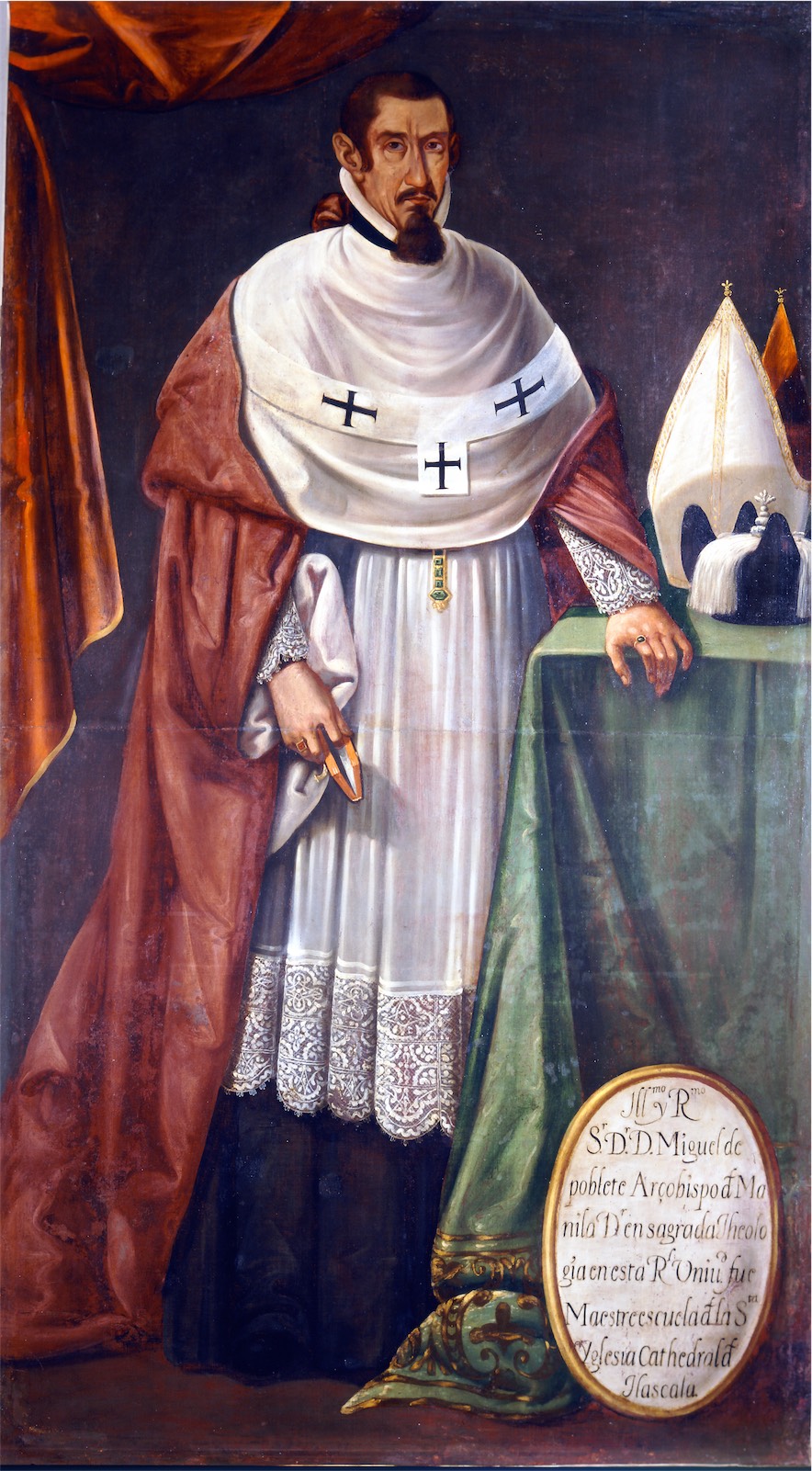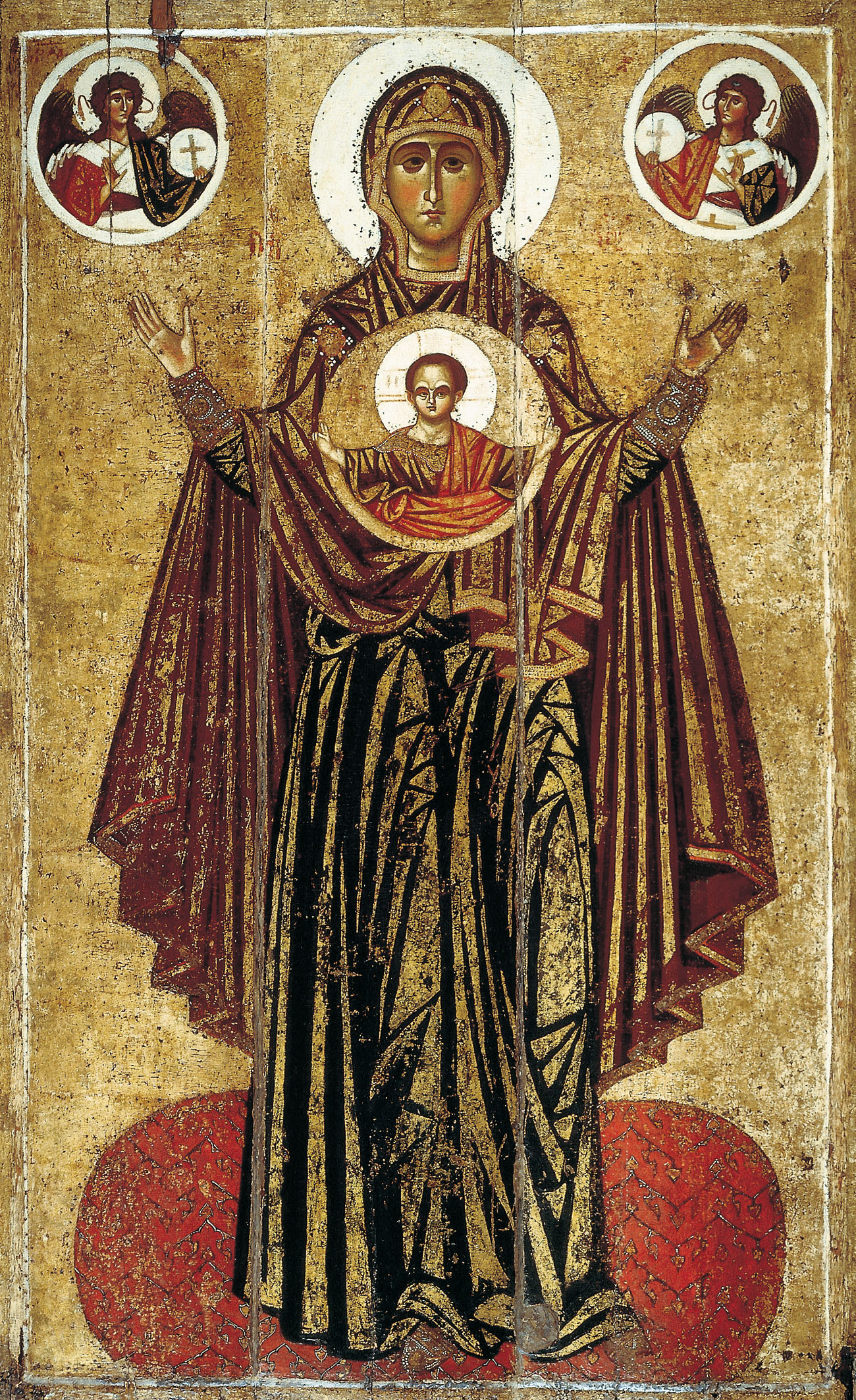|
Ecclesiastical Award
An Ecclesiastial award is an official award, honor or Privilege (canon law), privilege presented by ecclesiastical authority. Eastern Orthodox Church In the Eastern Orthodox Church certain official awards and honours may be bestowed upon members of the clergy and laity. Such awards are bestowed either by the ruling bishop under whose jurisdiction the recipient resides, or—in the case of higher awards— by a synod of bishops. When a bishop wishes to confer an ecclesiastical award or honor on a deacon or priest under his jurisdiction, this will normally be accomplished at the Little Entrance of the Divine Liturgy. At the end of the Third Antiphon (normally the Beatitudes), the procession with the Gospel Book will halt at the bishop's cathedra (episcopal throne). The clergyman who is to receive the award will be presented to the bishop, the protodeacon will remove the bishop's mitre, the bishop will laying on of hands, lay his hand upon the head of the clergyman and say the p ... [...More Info...] [...Related Items...] OR: [Wikipedia] [Google] [Baidu] |
Cross Procession In Novosibirsk 06
A cross is a religious symbol consisting of two intersecting lines, usually perpendicular to each other. The lines usually run vertically and horizontally. A cross of oblique lines, in the shape of the Latin letter X, is termed a saltire in heraldic terminology. The cross shape has been widely officially recognized as an absolute and exclusive religious symbol of Christianity from an early period in that religion's history.''Christianity: an introduction'' by Alister E. McGrath 2006 pages 321-323 Before then, it was used as a religious or cultural symbol throughout , in |
Mitre
The mitre (Commonwealth English) or miter (American English; American and British English spelling differences#-re, -er, see spelling differences; both pronounced ; ) is a type of headgear now known as the traditional, ceremonial headdress of bishops and certain abbots in traditional Christianity. Mitres are worn in the Catholic Church, Malankara Orthodox Syrian Church (IOC), Malankara Syrian Orthodox Church (Jacobites), Eastern Orthodox Church, Oriental Orthodox Churches, the Anglican Communion, some Lutheranism, Lutheran churches, for important ceremonies, by the Metropolitan of the Malankara Mar Thoma Syrian Church, and also, in the Catholic Church, all Cardinal (Catholic Church)#Cardinals who are not bishops, cardinals, whether or not bishops, and some Eastern Orthodox Archpriest#Eastern Christianity, archpriests. Etymology (Ionic Greek, Ionic ) is Greek language, Greek, and means a piece of armour, usually a metal guard worn around the waist and under a cuirass, as menti ... [...More Info...] [...Related Items...] OR: [Wikipedia] [Google] [Baidu] |
Dmitry Medvedev Receives The Saint Sava Award From Serbian Orthodox Church
Dmitry (); Church Slavic form: Dimitry or Dimitri (); ancient Russian forms: D'mitriy or Dmitr ( or ) is a male given name common in Orthodox Christian culture, the Russian version of Demetrios (, ). The meaning of the name is "devoted to, dedicated to, or follower of Demeter" (Δημήτηρ, ''Dēmētēr''), "mother-earth", the Greek goddess of agriculture. Short forms of the name from the 13th–14th centuries are Mit, Mitya, Mityay, Mit'ka or Miten'ka (, or ); from the 20th century (originated from the Church Slavic form) are Dima, Dimka, Dimochka, Dimulya, Dimusha, Dimon etc. (, etc.) St. Dimitri's Day The feast of the martyr Saint Demetrius of Thessalonica is celebrated on Saturday before November 8 Old Style and New Style dates">Old Style: October 26]. The name day (именины): October 26 (November 8 on the Julian Calendar) See also: Eastern Orthodox liturgical calendar. The Saturday before this is called Demetrius Saturday and commemorates the Orthodox soldier ... [...More Info...] [...Related Items...] OR: [Wikipedia] [Google] [Baidu] |
Orarion
The Orarion (Greek: ; Slavonic: орарь, ''orar'') is the distinguishing vestment of the deacon and subdeacon in the Eastern Orthodox Church, Oriental Orthodox Churches and Eastern Catholic Churches. It is a narrow stole, usually wide and of various lengths, made of brocade, often decorated with crosses (three, five or seven) embroidered or appliquéd along its length. It is usually trimmed with decorative banding around the edges and fringe at the two ends. Deacon The deacon wears the orarion over his left shoulder with the front portion draped over his left forearm. He will take this portion in his right hand when leading litanies or drawing attention to a particular liturgical action. This single orarion is the oldest form, as illustrated in traditional and older iconography. Archdeacons and protodeacons are awarded the much longer double orarion, which is worn over the left shoulder, wrapped around the chest and back, and brought back over the left shoulder to the ... [...More Info...] [...Related Items...] OR: [Wikipedia] [Google] [Baidu] |
Skufia
A (also , or ; or ) is an item of clerical clothing, a cap, worn by Eastern Orthodox, Eastern Lutheran and Eastern Catholic monastics (in which case it is black) or awarded to clergy as a mark of honor (in which case it is usually red or purple). Description A is a soft-sided brimless cap whose top may be pointed (Russian style), flat and pleated (Greek style), or flat with raised edges (Romanian style). Typically, monastics receive their either when they first become a novice or when they are tonsured. A monk or nun who has been tonsured to the Great Schema will wear a skoufia that has been embroidered with prayers, crosses, and figures of seraphim. High-ranking bishops (such as archbishops and metropolitans) will sometimes wear a black or purple with a small jewelled cross on informal occasions. A nun will sometimes wear a over her monastic veil; [...More Info...] [...Related Items...] OR: [Wikipedia] [Google] [Baidu] |
Kamilavka
A kalimavkion (), kalymmavchi (καλυμμαύχι), or, by metathesis of the word's internal syllables, kamilavka (), is a clerical headdress worn by Orthodox Christian and Eastern Catholic monks (in which case it is black) or awarded to clergy (in which case it may be red or purple). An approximate equivalent in the Latin Church is the biretta (). In the Byzantine Empire the term kamelaukion (καμηλ(λ)αύκιον or καμιλαύκιον) was a more general one for formal headgear, including items worn by the imperial family. Overview The kalimavkion is a stiff cylindrical head covering, similar to a stovepipe hat but without a brim. It first came in use after the reforms of Patriarch Nikon in the 1600s. The kalimavkion is worn during services; at other times, the softer skufia is worn in its place. The specific shape and colouring will differ between the various ethnic traditions: *In the Greek tradition, monks wear a simple black kalimavkion, covered by a blac ... [...More Info...] [...Related Items...] OR: [Wikipedia] [Google] [Baidu] |
Nabedrennik
A nabedrennik (Church Slavonic: набе́дренникъ - nabédrennik, "on the thigh") is a vestment worn by some Russian Orthodox priests. It is a square or rectangular cloth. Like the epigonation, it is worn at the right hip, suspended from a strap attached to the two upper corners of the vestment and drawn over the left shoulder; however, if the priest also wears an epigonation, then the nabedrennik is worn at the left hip, drawn over the right shoulder. This vestment appeared in the Russian Orthodox Church in the 16th century and is unknown elsewhere. It is the only vestment worn by a priest that is not worn by a bishop and also the only that has no specifically associated vesting prayer.{{Citation , year=2003 , publication-date=2003 , title=The Priest's Service Book, Orthodox Church in America , pages=30–31 , place=Dallas, Texas , publisher=Diocese of the South, Orthodox Church in America Instead, the prayer for the epigonation is used. Like the epigonation, the n ... [...More Info...] [...Related Items...] OR: [Wikipedia] [Google] [Baidu] |
Epigonation
The epigonation (Greek: , literally meaning "over the knee"), or pálitsa (Russian: , " club"), is a vestment used in some Eastern Christian churches. Description and usage In Eastern Orthodoxy and Eastern Catholic Churches which follow the Byzantine Rite the palitza is worn by all bishops, and as an ecclesiastical award for some priests. Its origin may be traced to the practice of Byzantine Emperors awarding ceremonial swords to their military commanders in recognition of their valour in defending the empire. Such swords were often accompanied by elaborate thigh-shields which were suspended from the belt and protected the leg from bruising caused by the constant bumping of the sword against the thigh. When the emperors began to give awards to the clergy, the thigh-shield alone was awarded. According to another theory, the garment may be traced to the Roman mappa, an aristocratic handkerchief carried in hand (which is also postulated to be the origin of the Western Christian mani ... [...More Info...] [...Related Items...] OR: [Wikipedia] [Google] [Baidu] |
Pectoral Cross
A pectoral cross or pectorale (from the Latin ''pectoralis'', "of the chest") is a Christian cross, cross that is worn on the chest, usually suspended from the neck by a cord or Link chain, chain. In ancient history and the Middle Ages, pectoral crosses were worn by both clergy and laity. By the Late Middle Ages, the pectoral cross came to be a special indicator of position worn by bishops. In the Latin Church, Roman Catholic Church, the wearing of a pectoral cross remains restricted to popes, cardinals, bishops and abbots. In Eastern Orthodox Church and Eastern Catholic Churches, Byzantine Catholic Churches that follow a Slavic peoples, Slavic Tradition, priests also wear pectoral crosses, while deacons and minor orders do not. The modern pectoral cross is relatively large, and is different from the small cross necklace, crosses worn on necklaces by many Christians. Most pectoral crosses are made of precious metals (platinum, gold or silver) and some contain precious or semi-p ... [...More Info...] [...Related Items...] OR: [Wikipedia] [Google] [Baidu] |
Archbishop
In Christian denominations, an archbishop is a bishop of higher rank or office. In most cases, such as the Catholic Church, there are many archbishops who either have jurisdiction over an ecclesiastical province in addition to their own archdiocese ( with some exceptions), or are otherwise granted a titular archbishopric. In others, such as the Lutheran Church of Sweden, the title is only borne by the leader of the denomination. Etymology The word ''archbishop'' () comes via the Latin . This in turn comes from the Greek , which has as components the etymons -, meaning 'chief', , 'over', and , 'guardian, watcher'. Early history The earliest appearance of neither the title nor the role can be traced. The title of "metropolitan" was apparently well known by the 4th century, when there are references in the canons of the First Council of Nicæa of 325 and Council of Antioch of 341, though the term seems to be used generally for all higher ranks of bishop, including patriarc ... [...More Info...] [...Related Items...] OR: [Wikipedia] [Google] [Baidu] |
Mitre
The mitre (Commonwealth English) or miter (American English; American and British English spelling differences#-re, -er, see spelling differences; both pronounced ; ) is a type of headgear now known as the traditional, ceremonial headdress of bishops and certain abbots in traditional Christianity. Mitres are worn in the Catholic Church, Malankara Orthodox Syrian Church (IOC), Malankara Syrian Orthodox Church (Jacobites), Eastern Orthodox Church, Oriental Orthodox Churches, the Anglican Communion, some Lutheranism, Lutheran churches, for important ceremonies, by the Metropolitan of the Malankara Mar Thoma Syrian Church, and also, in the Catholic Church, all Cardinal (Catholic Church)#Cardinals who are not bishops, cardinals, whether or not bishops, and some Eastern Orthodox Archpriest#Eastern Christianity, archpriests. Etymology (Ionic Greek, Ionic ) is Greek language, Greek, and means a piece of armour, usually a metal guard worn around the waist and under a cuirass, as menti ... [...More Info...] [...Related Items...] OR: [Wikipedia] [Google] [Baidu] |
Panagia
Panagia (, fem. of , + , the ''All-Holy'', or the ''Most Holy''; pronounced ) (also transliterated Panaghia or Panayia), in Medieval and Modern Greek, is one of the titles of Mary, Mother of God, used especially in Orthodox Christianity and Eastern Catholicism. Most Greek churches dedicated to the Virgin Mary are called ''Panagia''; the standard western Christian designation of "St. Mary" is rarely used in the East, as Mary is considered the holiest of all created beings and therefore of the highest status and glory of all the saints. Iconography ''Panagia'' is also the term for a particular type of icon of the Theotokos, wherein she is facing the viewer directly, usually depicted full length with her hands in the ''orans'' position, and with a medallion showing the image of Christ as a child in front of her chest. This medallion symbolically represents Jesus within the womb of the Virgin Mary at the moment of the Incarnation. This type of icon is also called the ''Platyté ... [...More Info...] [...Related Items...] OR: [Wikipedia] [Google] [Baidu] |





